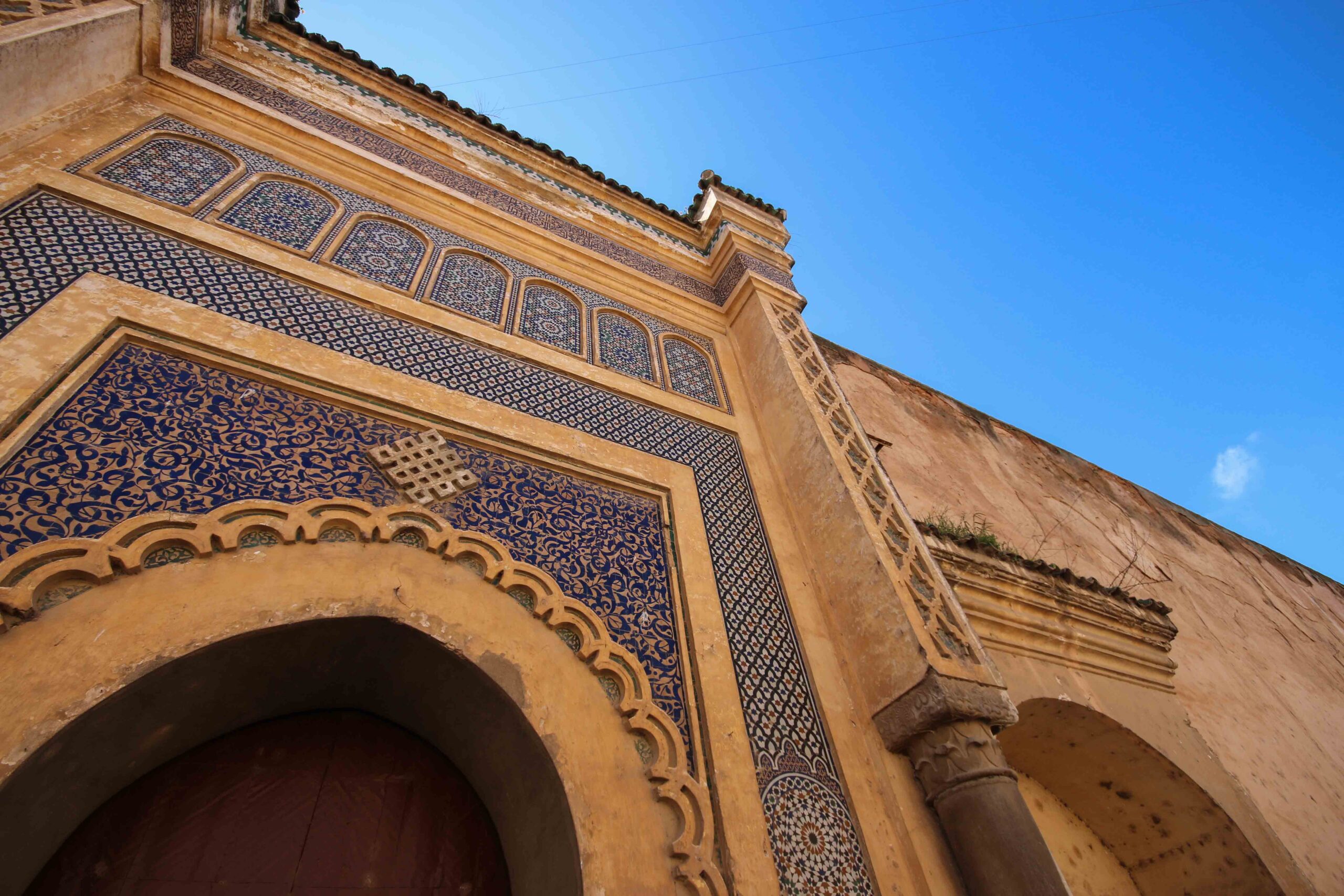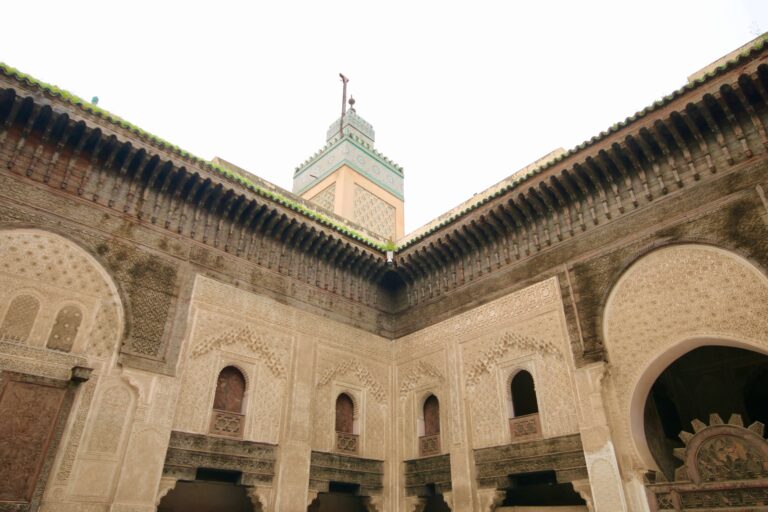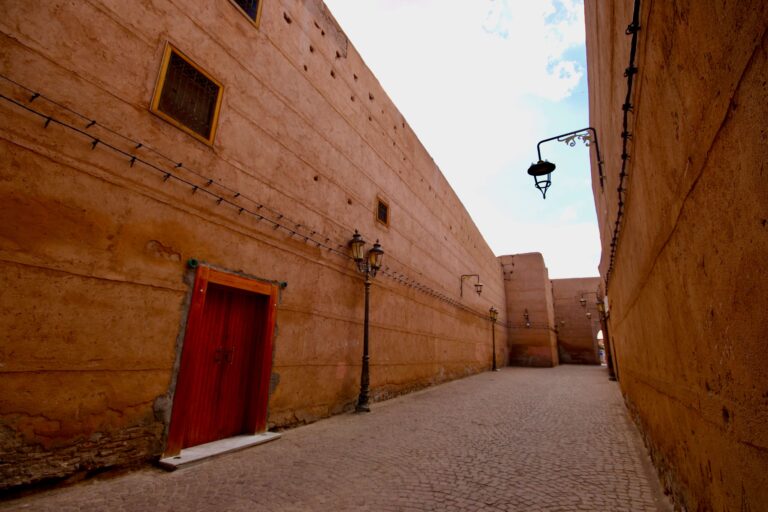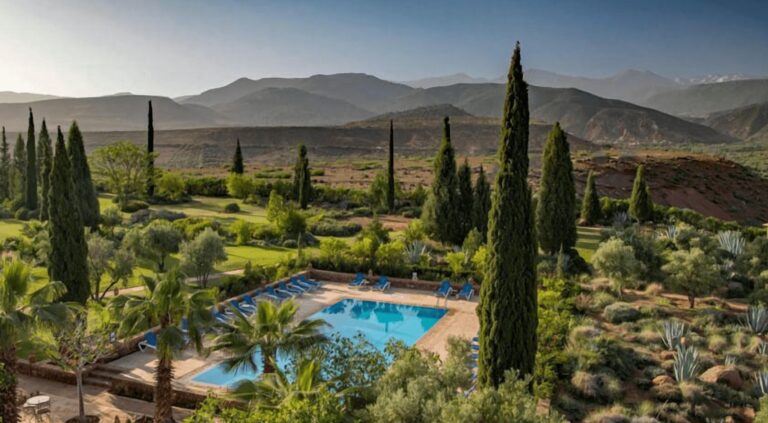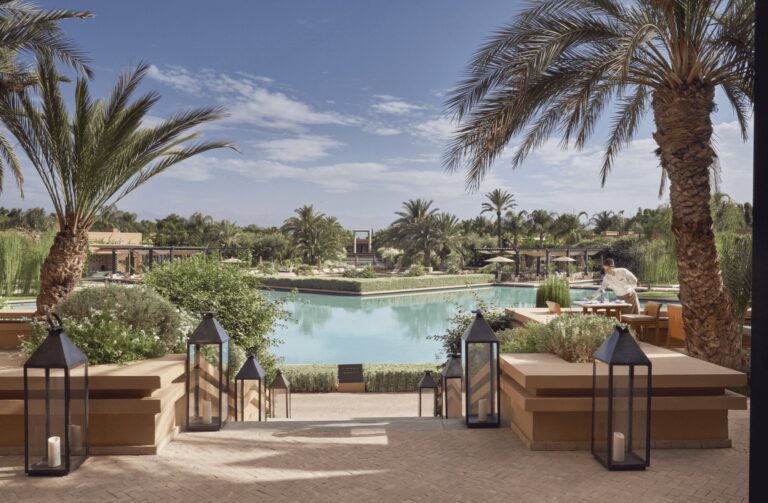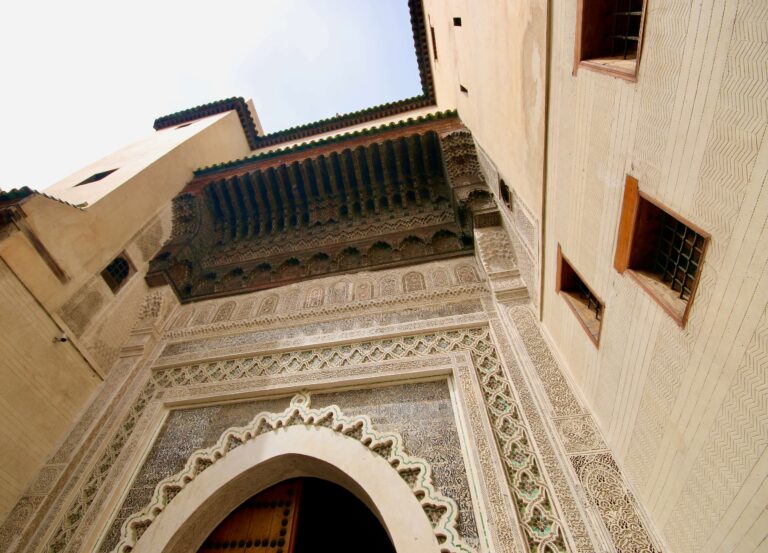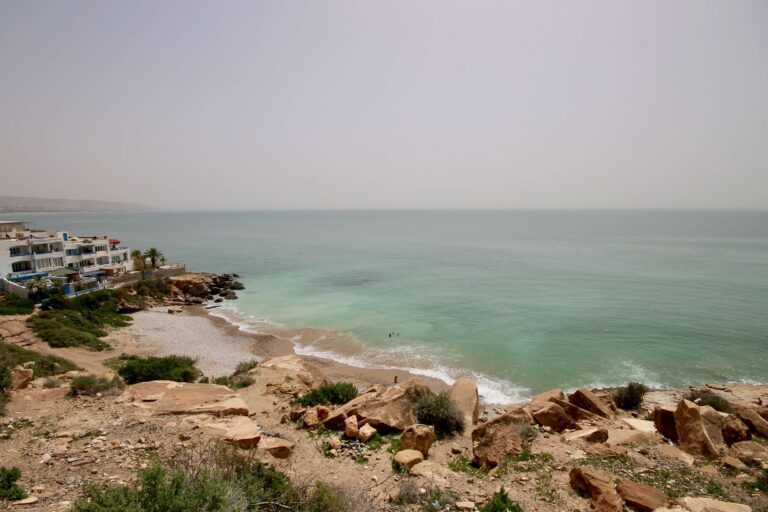Imperial Cities: One Week Morocco Itinerary from Fes to Marrakech
Immerse yourself in Morocco’s cultural heritage on this one-week Morocco itinerary from Fes to Marrakech, which takes in four fascinating imperial cities. It’s ideal for history buffs wanting to learn more about the country’s storied past and witness some of its most impressive architectural landmarks.
As you journey through the Imperial Cities, you won’t just be stepping back in time but also learning about the evolution of these urban centres in today’s modern world. I’ve thoroughly explored each of these four destinations and always come away with fresh perspectives on Morocco’s past and present.
Want to learn more about Morocco’s imperial cities? Check out my detailed article here.
ONE WEEK MOROCCO ITINERARY OVERVIEW
Over the course of a week, you’ll experience the ancient city of Fes, the former capital of Meknes and the current one, Rabat, as well as the historic trade hub of Marrakech. This 7-day Morocco itinerary also includes a stop in the pulsing metropolis of Casablanca for a taste of modern life in what is Morocco’s biggest metropolis.
At every stop on this one week Morocco itinerary, you’ll discover vibrant souks, magnificent mosques and mouthwatering cuisine while gaining an understanding of Morocco’s diverse cultural tapestry.
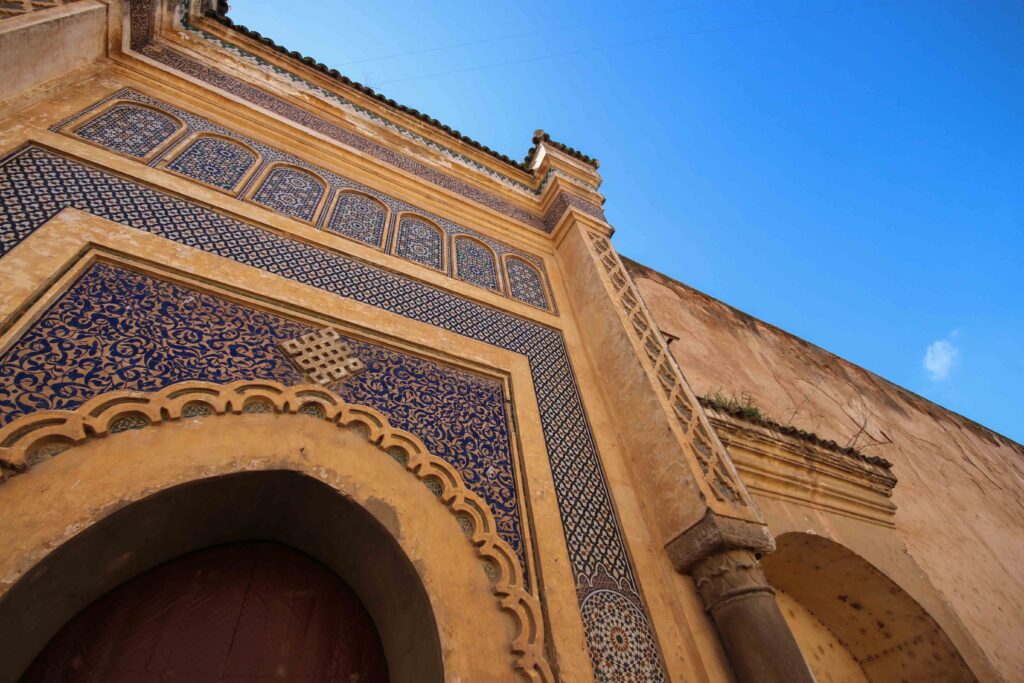
Disclosure: This article contains affiliate links, meaning I earn a small commission when you make a purchase. Affiliate links cost you nothing and ensure my content stays free!

PLAN YOUR TRIP WITH MY FAVOURITE RESOURCES:
Find hotels via Booking
Book tours and attractions via Viator or GetYourGuide
Find a rental car via Discover Cars
Book flights via Kiwi or Booking
Search for buses and trains via 12Go or Omio
Get travel insurance via SafetyWing
Buy a digital eSIM with Airalo
By purchasing through my links, you’ll be supporting my website at no additional cost to you
Highlights:
- See the world’s oldest university in the UNESCO-listed medina of Fes
- Discover the legacy of Sultan Moulay Ismail in the imperial city of Meknes
- Explore Morocco’s best-preserved Roman ruins at Volubilis
- Wander the atmospheric Kasbah of Rabat
- Experience the buzzing energy of Casablanca – home to the magnificent Hassan II Mosque
- Immerse yourself in the sights, sounds and smells of the Marrakech souks

If you’re renting a car for this one week Morocco itinerary, I recommend you do so through Discover Cars. They have everything from compact automatics to manual vans, ensuring there’s something for all travel groups and driving styles. Plus, they offer 24/7 support and free cancellations, because plans can change!
To complete this Morocco imperial cities itinerary, simply fly into Fes and depart from Marrakech (or visa versa). You can rent a car at either airport and hit the road straight away. Alternatively, there are good train and bus connections between each stop if you prefer to complete this one-week Morocco itinerary using public transport (I’ll provide more details below).
For those exploring Morocco by public transport, I find 12Go to be a fantastic resource as it compares all of the options available (buses, trains and private transfers). You can easily book tickets through the site, either before or during your adventure.
To learn more about your start and end destinations, check out my Essential Travel Guide to Fes and Essential Travel Guide to Marrakech. They’re packed with useful info about things to see and do, recommended accommodations and the best time to visit Morocco.
If you don’t want to travel independently, there are a variety of tours available at Viator and GetYourGuide that take in Morocco’s imperial cities, including all of the destinations on this itinerary. You can either join a multi-day tour or make a base somewhere and do guided day trips from there.
Day 1 and 2: Fes
Begin your journey in the ancient imperial city of Fes, which was founded back in the 8th century. Now designated as a UNESCO World Heritage Site, its monument-filled medina has remained remarkably intact for almost 1200 years.
Within its maze-like alleys, you’ll discover souks overflowing with treasures, centuries-old Islamic schools and historic tanneries, as well as one of the oldest universities in the world.
To make the most of your time, I’d recommend booking a guide for a half-day tour of Fes as this will help you get your bearings. With an insider’s perspective, you’ll better appreciate the medina’s layout and avoid hassles from pushy vendors. It is really easy to get lost in Fes, although that is all part of the experience!
Not-to-miss highlights include the Al Quaraouiyine Mosque and Al Attarine Madrasa (both incredible architectural landmarks), as well as the newly restored Dar Batha Museum and the Chouara Tannery. I particularly love the Nejjarine Museum of Wooden Crafts, which showcases Morocco’s rich artisanal legacy.
If time allows, this cooking class in Fes offers a good introduction to Moroccan cuisine for foodies!
For more info about the top things to see and do in Fes, check out my Essential Travel Guide to Fes. Additional Fes travel inspiration can be found here.
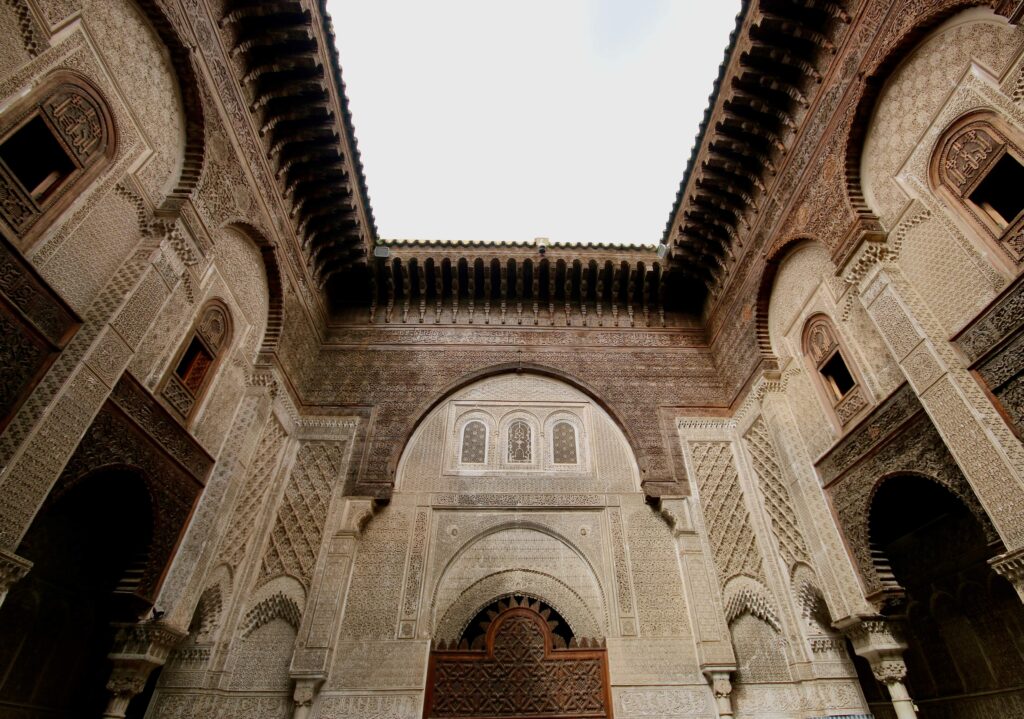
If you’re staying in one of Fes’ amazing riads (which I’d highly recommend), schedule in some time to simply relax in the courtyard or on the rooftop terrace, most of which boast incredible views across the city. Here’s a list of some of my favourite luxury riads in Fes for those looking to splurge.
Best places to stay in Fes
Luxury places to stay in Fes
Mid-range places to stay in Fes
Budget places to stay in Fes
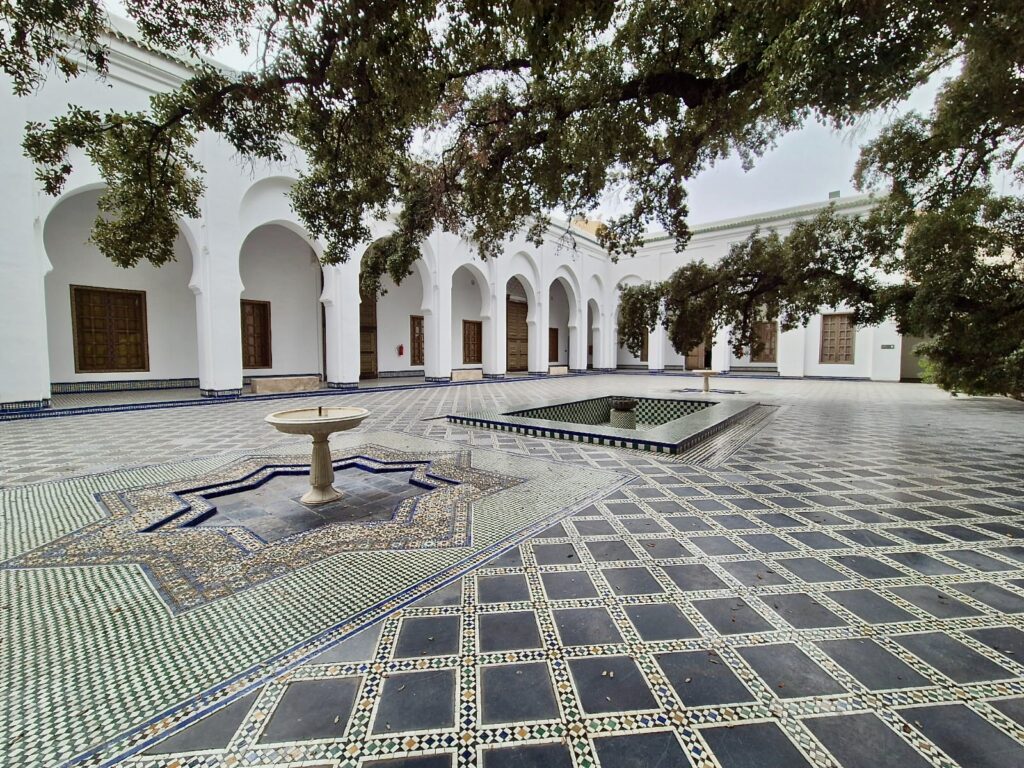
Day 3: Meknes and Volubilis to Rabat
After leaving Fes, make the one-hour drive (60 km) to Meknes, which once served as the capital of Morocco. It dazzles with its grand mosques, mausoleums and monumental gate dating from the rule of Sultan Moulay Ismail.
Wander through the lively souks of the ancient medina or take a horse-drawn carriage ride through the Imperial City to visit the ornately decorated Mausoleum of Moulay Ismail.
To learn more about things to see and do in Meknes, check out my Essential Travel Guide to Meknes.
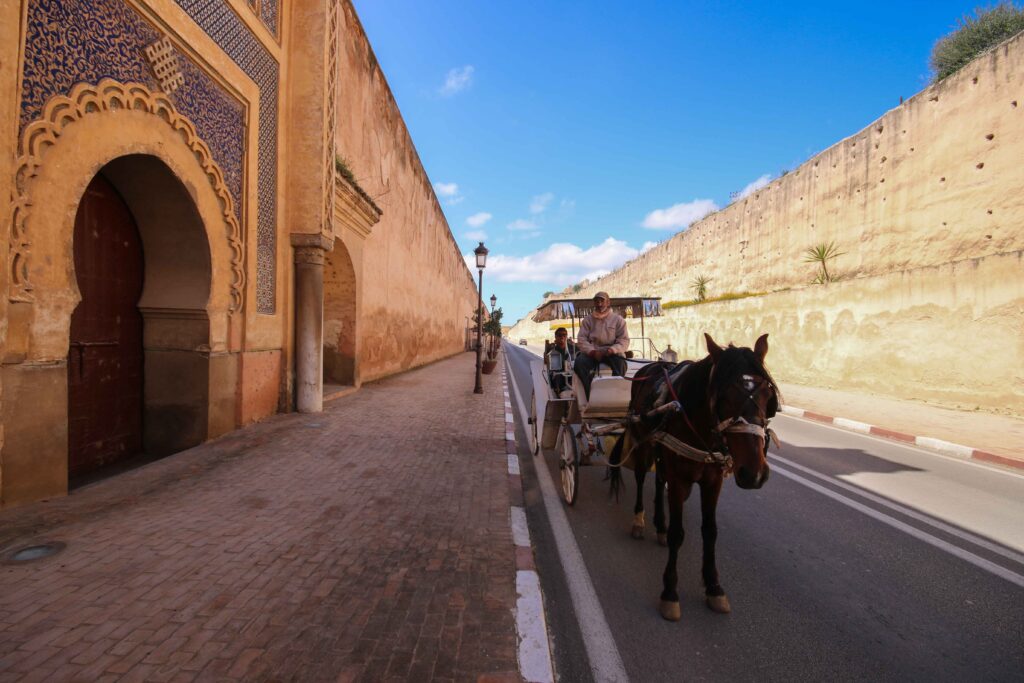
Next, venture 30 km further to Volubilis to discover Morocco’s largest and best-preserved Roman ruins. Dating back to the 3rd century BC, the site features towering columns and crumbling temples, as well as mosaics depicting Orpheus and Hercules.
Not far away lies the picturesque mountain village of Moulay Idriss, an important pilgrimage site with a peaceful, whitewashed medina.
A further two hours (150 km) down the road is the capital of Morocco, Rabat, a laid-back city that combines an ancient medina with a French colonial-built new town. It’s one of my favourite cities in the country and a destination I think is a bit of an underrated gem.
I highly recommend staying at a riad in Rabat’s medina to really immerse yourself in the city’s architectural heritage. Some of the capital’s best riads are highlighted in my Essential Travel Guide to Rabat, as well as a rundown of the best things to do.
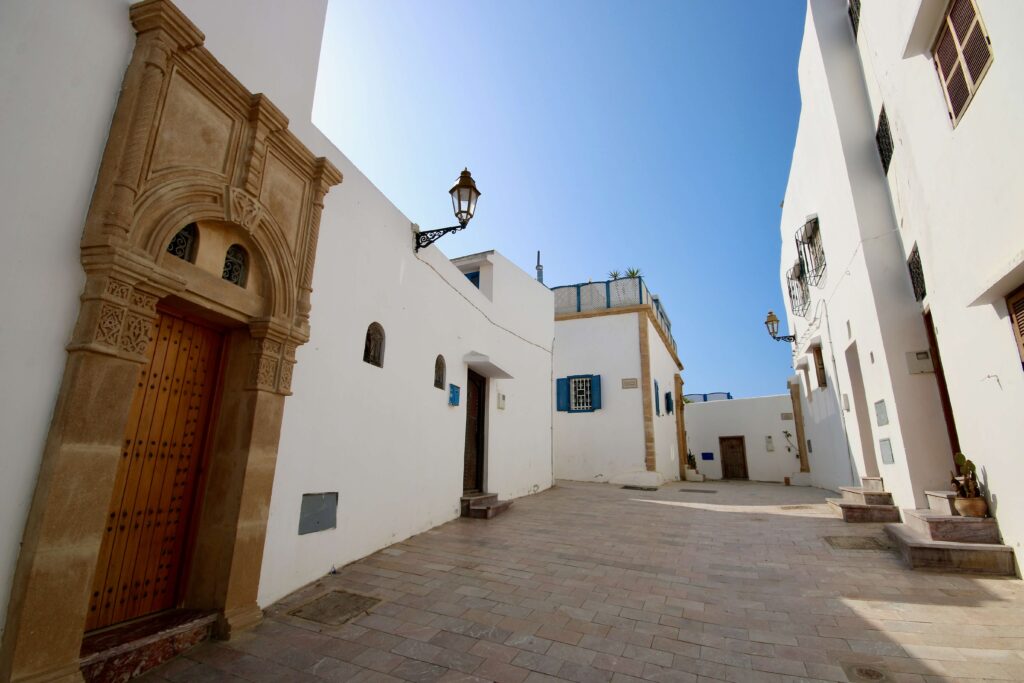
Best places to stay in Rabat
Luxury places to stay in Rabat
Mid-range places to stay in Rabat
Budget places to stay in Rabat
If you’re travelling by public transport, you can get a train from Fes to Meknes, then another from Meknes to Rabat. There are frequent departures throughout the day. The leg from Fes to Meknes takes an hour and the journey from Meknes to Rabat just over two.
If you wanted to see Volubilis also, you would need to hire a private driver in Meknes for the 40-minute journey to the Roman ruins.
Alternatively, you can book a private transfer from Fes to Rabat that includes stops in Meknes and Volubilis for you to explore at your leisure.
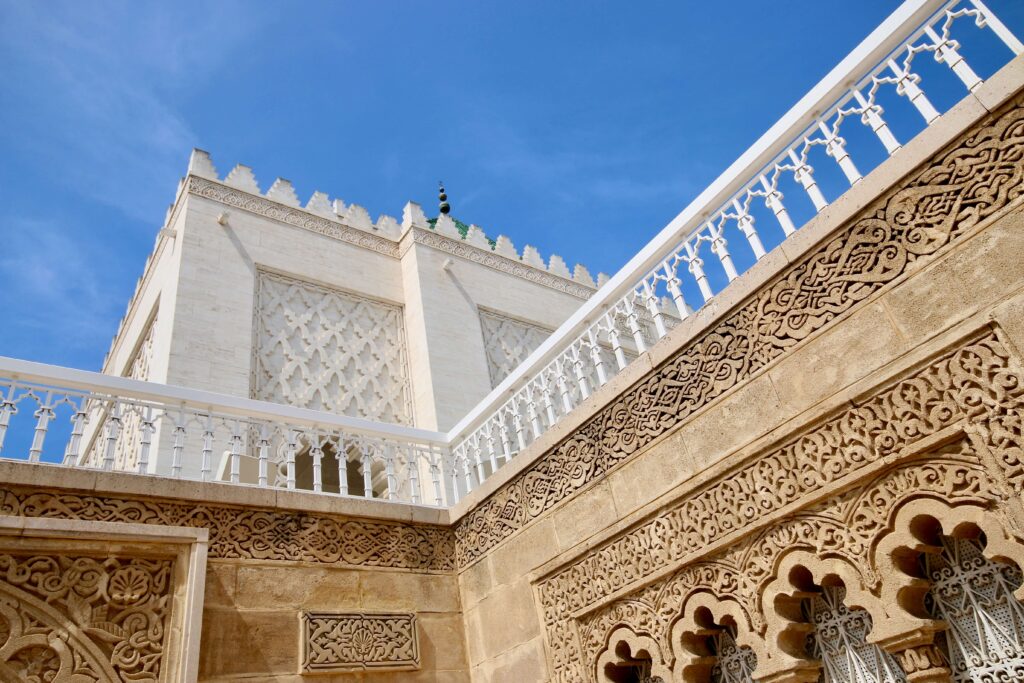
Day 4: Rabat
Spend a full day exploring Rabat, which was founded in the 12th century by the Almohads and later served as a French administrative centre. It centres around a laid-back medina and an atmospheric Kasbah district that is designated as a UNESCO World Heritage Site.
Witness the 12th-century minaret of the Hassan Tower and the magnificent Mausoleum of Mohammed V before relaxing in the peaceful Andalusian Gardens. Within Rabat’s medina, you can shop for traditional handicrafts and Amazigh rugs or simply marvel at the beautifully restored Fondouk Ben Aïcha.
In Rabat’s Ville Nouvelle, you’ll find some of Morocco’s best museums. These include the Museum of History and Civilizations and the Mohammed VI Museum of Modern and Contemporary Art. Additionally, there’s a fine assemblage of French colonial architecture.
History buffs shouldn’t miss the ruins of Chellah, an ancient necropolis on the banks of the Bou Regreg River.
If you want to explore with a local, I’d recommend this cultural walking tour of Rabat. For those interested in Morocco’s culinary treasures, you can get hands-on with a Moroccan cooking class in Rabat.
Additional Rabat travel inspiration can be found here.
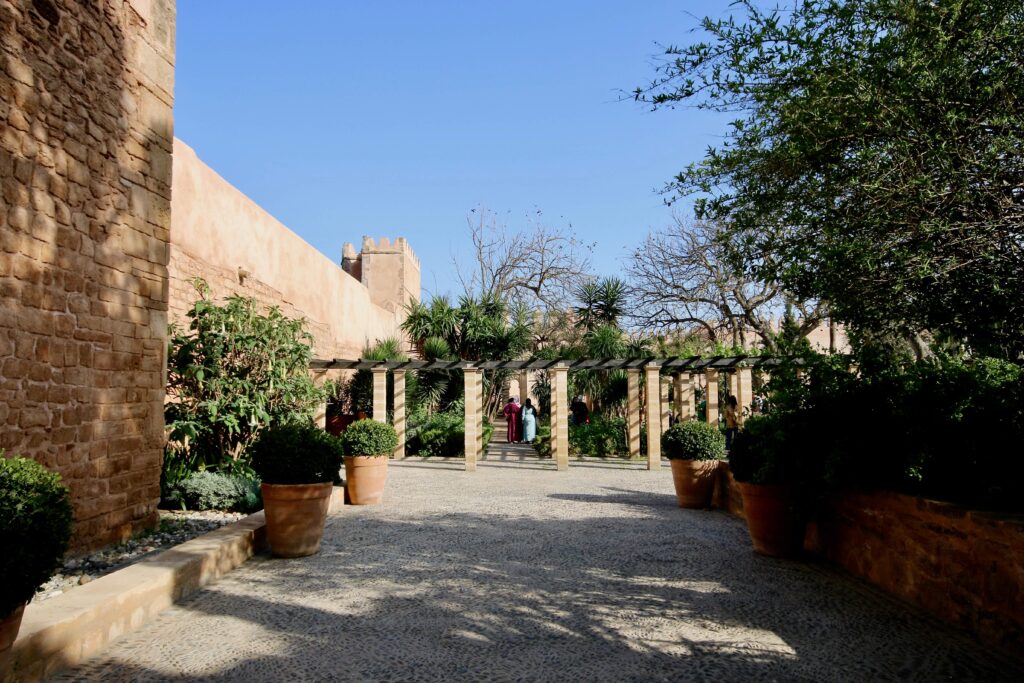
Day 5: Casablanca
It’s just a one-hour hop from Rabat to Casablanca – the largest city in Morocco. While it can feel chaotic and busy (and isn’t always on tourists’ radars), it’s worth a stop to experience modern Moroccan life and take in the spellbinding Hassan II Mosque.
One of Africa’s largest and most architecturally stunning mosques, it can accommodate up to 25,000 worshippers and is accessible to non-Muslims outside of prayer times. Skip-the-line guided tours are offered several times daily for visitors wanting to experience Hassan II’s magnificence and its architectural innovations.
After you’ve ticked the Hassan II Mosque off your list, take time to stroll along the pedestrianised Corniche to enjoy the ocean breezes and soak up the beachside activities of Ain Diab. Back in the city, you’ll find some of Morocco’s finest examples of Mauresque architecture. These combine neo-Moorish design with Art Deco and Art Nouveau features.
Keep an eye out for the Palace of Justice and the Bank of Morocco building.
To really immerse yourself in Casablanca’s architectural heritage, I’d recommend this walking tour of the medina and its surroundings.
For more Casablanca inspiration, check out my Essential Travel Guide to Casablanca, which includes a detailed list of the best places to stay. Additional Casablanca travel inspiration can be found here.
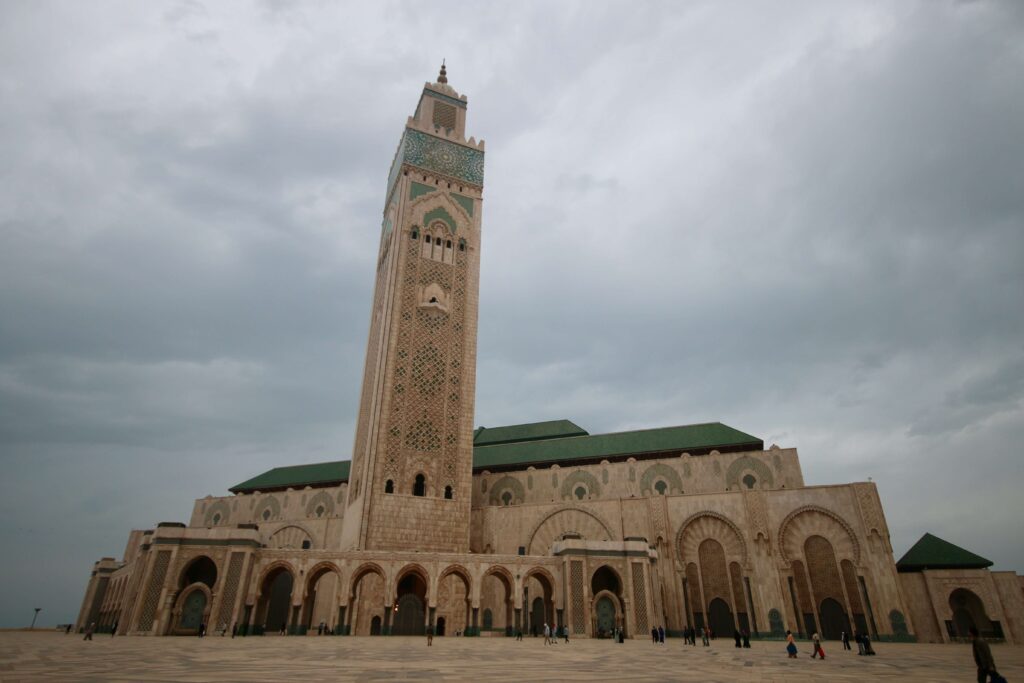
Best places to stay in Casablanca
Luxury places to stay in Casablanca
Mid-range places to stay in Casablanca
Budget places to stay in Casablanca
If you’re travelling from Rabat to Casablanca by public transport, you can catch a bus (CTM operates dozens per day). Prices start from around 35 DH. Alternatively, hourly trains connect from Rabat Ville to Casa Voyageurs (40 DH). Either way, the journey takes roughly an hour.

Day 6 and 7: Marrakech
The final stop on your journey is the intoxicating city of Marrakech, which is a three-hour drive from Casablanca. Within the ancient ramparts of its red-hued medina, a kaleidoscope of sights, sounds and smells awaits.
Marrakech’s lively souks are overflowing with colourful textiles, fragrant spices and enchanting lanterns. Meanwhile, its historic palaces and museums reveal the city’s rich heritage as a crossroads of trade and culture.
As the sun begins to set, Djemaa el-Fnaa square comes alive with street food vendors, snake charmers and performers. If being in the heart of all the action is too much, head to a restaurant with a rooftop terrace to watch it unfold from above while sipping on a mint tea.
Spend the following day taking in the sights of Marrakech, including the architecturally impressive Ben Youssef Madrasa and Bahia Palace. It’s also hard not to miss the towering minaret of Koutoubia Mosque. If time allows, I’d also recommend visiting the Saadian Tombs and the Moroccan Culinary Arts Museum.
No visit to Marrakech is complete without experiencing the souks where you’ll find everything from handmade leather goods to Amazigh carpets. Don’t forget to bring your haggling skills!
For a better idea of things to buy in the Marrakech souks, check out my shopping guide here. Additional Marrakech travel inspiration can be found here.
As in Fes and Rabat, I highly recommend staying in a riad, with Marrakech boasting some of the country’s best. Hidden within the winding alleys of the medina, these authentic Moroccan guesthouses range from highly traditional to alluringly contemporary, many with courtyard plunge pools and rooftop terraces.
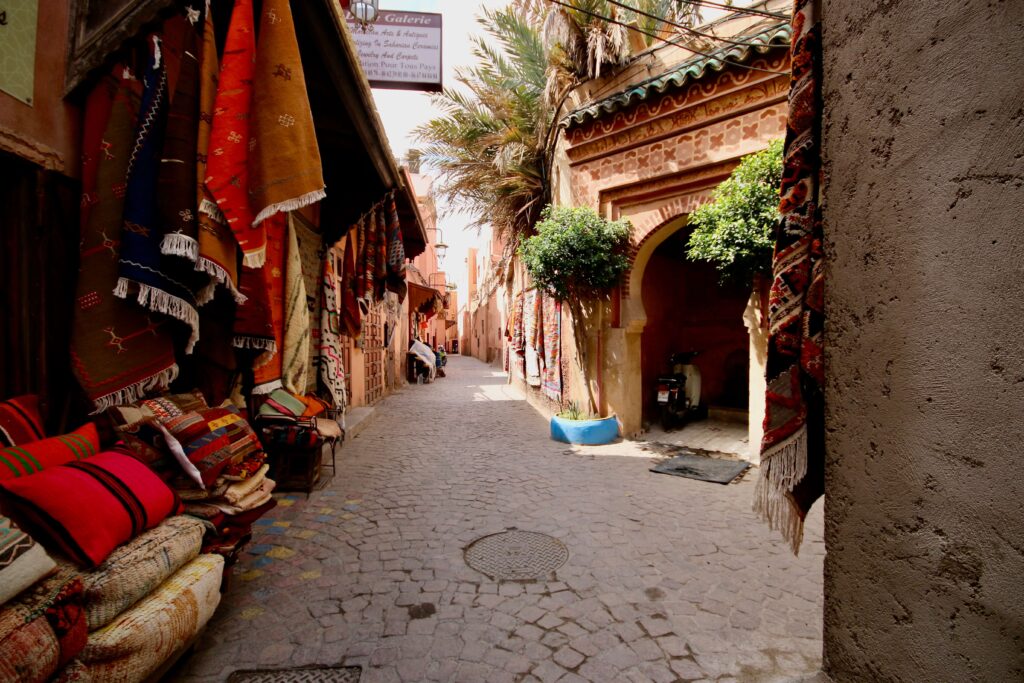
Best places to stay in Marrakech
Luxury places to stay in Marrakech
Mid-range places to stay in Marrakech
Budget places to stay in Marrakech
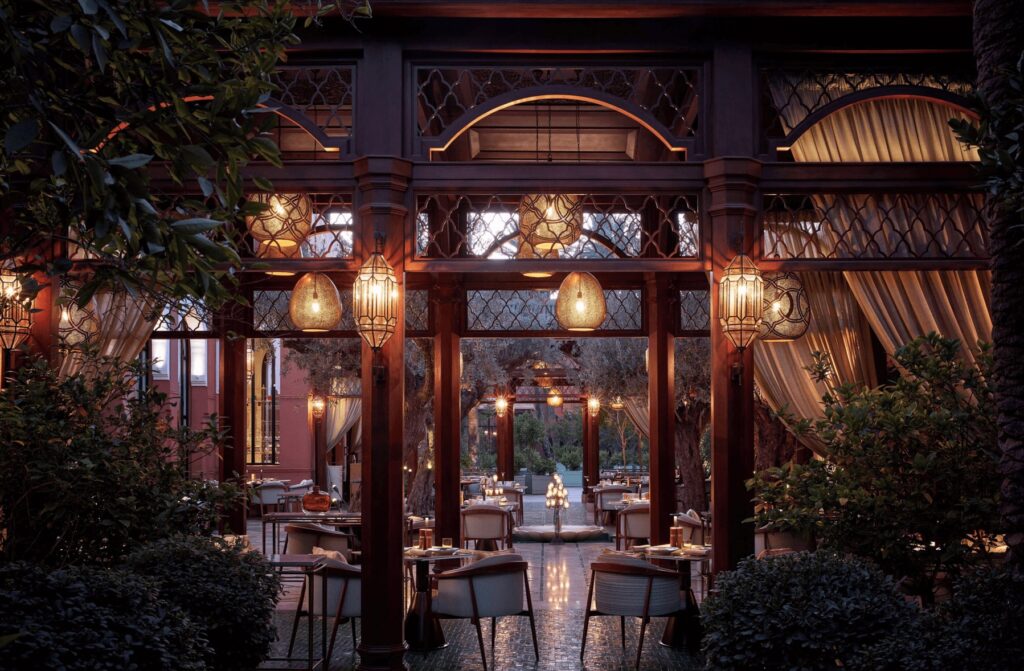
If you’re travelling from Casablanca to Marrakech by public transport, the bus takes around 3.5 hours (CTM operates several per day). Prices start from around 120 DH. Alternatively, there are regular trains from Casa Voyageurs to Marrakech. The journey takes just under three hours and costs roughly 160 DH.
Optional add-ons:
If you have an extra day or two, make the drive over the Tizi-n-Tichka Pass to the ancient ksar of Ait Benhaddou. The journey can also take in the “Hollywood of Morocco” – Ouarzazate.
Alternatively, experience some of the country’s most beguiling scenery on an adventure through the gorges of Dades and Todra, including a stop in the “Rose Capital” of Kalaat M’Gouna.
If you’re renting a car for this one week Morocco itinerary, I recommend you do so through Discover Cars. They have everything from compact automatics to manual vans, ensuring there’s something for all travel groups and driving styles. Plus, they offer 24/7 support and free cancellations, because plans can change!

PLAN YOUR TRIP WITH MY FAVOURITE RESOURCES:
Find hotels via Booking
Book tours and attractions via Viator or GetYourGuide
Find a rental car via Discover Cars
Book flights via Kiwi or Booking
Search for buses and trains via 12Go or Omio
Get travel insurance via SafetyWing
Buy a digital eSIM with Airalo
By purchasing through my links, you’ll be supporting my website at no additional cost to you
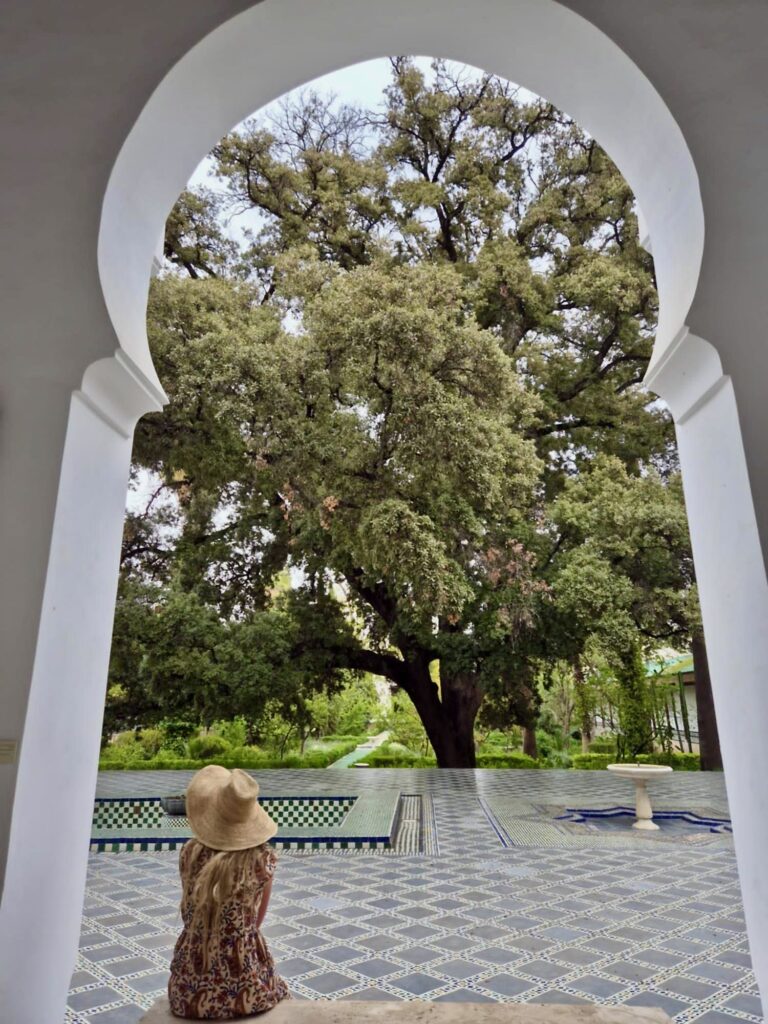
About Me
I’m Malika, a global traveller who first visited Morocco in 2014 before marrying a local and settling down in a little village on the Atlantic coast. Over the years, I’ve developed an intense love for Morocco, its incredible landscapes, storied cities and the exceptionally generous hospitality of its people.
Malika in Morocco is a place to share my years of experience exploring the country, from north to south and from the Atlantic Ocean to the Sahara Desert. As a resource for travellers visiting Morocco, I want to encourage others to experience this captivating destination the way they desire, whether that’s independently or under the expert guidance of local tour operators.
I believe strongly in supporting responsible and sustainable tourism initiatives while inspiring travel experiences that are life-impacting and mutually beneficial for both travellers and locals.
